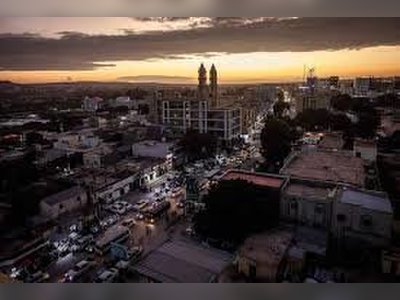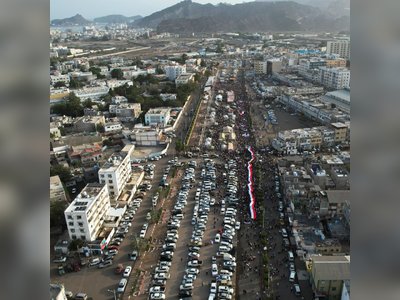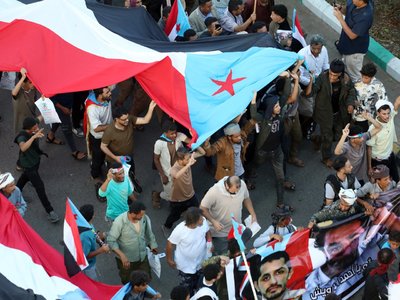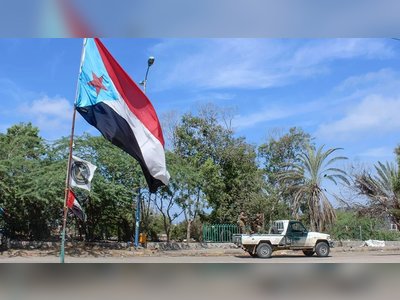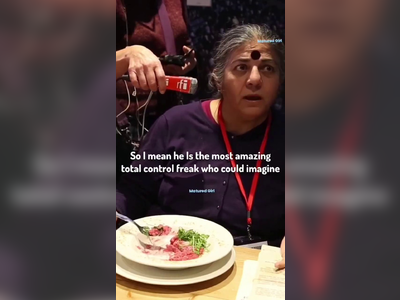
Gaza's Humanitarian Crisis Deepens Amid Prolonged Conflict
Over 46,500 Palestinians killed, mass displacement, and severe shortages highlight the staggering toll of ongoing hostilities.
Fifteen months into the prolonged conflict in Gaza, conditions for the territory's 2.1 million residents have reached a critical state.
With the Israeli military operations continuing to exert immense pressure, over 46,500 Palestinians have lost their lives.
Most of the civilian population, approximately 1.9 million people or 90%, are now displaced, grappling with makeshift accommodations amidst severe food shortages and cold.
The Israeli government's military operations have been concentrated predominantly in the northern parts of Gaza.
Israel maintains that it aims to prevent Hamas from regrouping, while Palestinian officials accuse Israel of attempting to depopulate a buffer zone permanently.
The result has been devastating, with at least 5,000 more Palestinians killed in 100 days of intensified strikes.
Shaina Low, from the Norwegian Refugee Council, describes the conditions as 'simply unimaginable,' pointing out acute food and water shortages as aid access remains sporadic.
Despite Israeli claims of facilitating humanitarian aid, organizations on the ground report frequent disruptions and accusations of aid convoy looting by armed groups, as voiced by Israeli Finance Minister Bezalel Smotrich, who supports halting aid as a tactic against Hamas.
The economic impact is stark.
Basic sustenance prices have become prohibitive, with a 25kg sack of flour now costing $140, a massive increase from its previous price of $10, rendering it inaccessible for many.
Humanitarian plans for 2024 predictably fell short, with significant portion of aid deliveries either denied, impeded, or canceled altogether.
Nusseibeh, a 25-year-old displaced resident, voices the community's despair: 'We are tired; the children are dying from starvation and cold.
All we want is for this war to stop.' Weather conditions compound the misery, as recent reports of newborn deaths from hypothermia underscore a public health crisis.
Medical infrastructure is severely compromised.
Out of 36 hospitals, only 16 are operational, and even these are struggling with reduced capacity.
The World Health Organization highlights that a quarter of the 105,000 injured civilians face life-altering injuries, while over a thousand healthcare workers have perished.
The media and press freedoms suffer as well.
Israeli policies continue to restrict foreign journalists from entering Gaza, leaving Palestinian reporters, under substantial risk, to provide coverage.
Since the conflict's escalation in October 2023, at least 217 journalists have been killed.
Despite diplomatic efforts suggesting proximity to a ceasefire, violence remains unabated.
Negotiations brokered in Qatar involve multiple international stakeholders, yet the civilian population remains skeptical as tangible results elude them.
The complexities of the conflict, marked by shifting military tactics and international pressure, continue to exacerbate the humanitarian plight in Gaza.
While Israeli estimates suggest possible casualties among hostages, ongoing diplomatic discussions hint towards critical decisions ahead that could alter the trajectory of what has become one of the Middle East’s enduring humanitarian crises.
With the Israeli military operations continuing to exert immense pressure, over 46,500 Palestinians have lost their lives.
Most of the civilian population, approximately 1.9 million people or 90%, are now displaced, grappling with makeshift accommodations amidst severe food shortages and cold.
The Israeli government's military operations have been concentrated predominantly in the northern parts of Gaza.
Israel maintains that it aims to prevent Hamas from regrouping, while Palestinian officials accuse Israel of attempting to depopulate a buffer zone permanently.
The result has been devastating, with at least 5,000 more Palestinians killed in 100 days of intensified strikes.
Shaina Low, from the Norwegian Refugee Council, describes the conditions as 'simply unimaginable,' pointing out acute food and water shortages as aid access remains sporadic.
Despite Israeli claims of facilitating humanitarian aid, organizations on the ground report frequent disruptions and accusations of aid convoy looting by armed groups, as voiced by Israeli Finance Minister Bezalel Smotrich, who supports halting aid as a tactic against Hamas.
The economic impact is stark.
Basic sustenance prices have become prohibitive, with a 25kg sack of flour now costing $140, a massive increase from its previous price of $10, rendering it inaccessible for many.
Humanitarian plans for 2024 predictably fell short, with significant portion of aid deliveries either denied, impeded, or canceled altogether.
Nusseibeh, a 25-year-old displaced resident, voices the community's despair: 'We are tired; the children are dying from starvation and cold.
All we want is for this war to stop.' Weather conditions compound the misery, as recent reports of newborn deaths from hypothermia underscore a public health crisis.
Medical infrastructure is severely compromised.
Out of 36 hospitals, only 16 are operational, and even these are struggling with reduced capacity.
The World Health Organization highlights that a quarter of the 105,000 injured civilians face life-altering injuries, while over a thousand healthcare workers have perished.
The media and press freedoms suffer as well.
Israeli policies continue to restrict foreign journalists from entering Gaza, leaving Palestinian reporters, under substantial risk, to provide coverage.
Since the conflict's escalation in October 2023, at least 217 journalists have been killed.
Despite diplomatic efforts suggesting proximity to a ceasefire, violence remains unabated.
Negotiations brokered in Qatar involve multiple international stakeholders, yet the civilian population remains skeptical as tangible results elude them.
The complexities of the conflict, marked by shifting military tactics and international pressure, continue to exacerbate the humanitarian plight in Gaza.
While Israeli estimates suggest possible casualties among hostages, ongoing diplomatic discussions hint towards critical decisions ahead that could alter the trajectory of what has become one of the Middle East’s enduring humanitarian crises.




